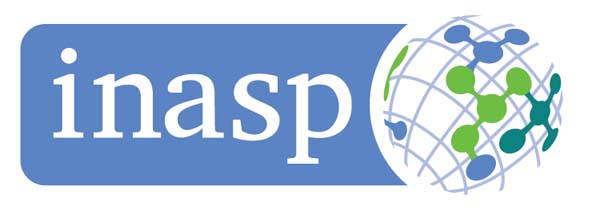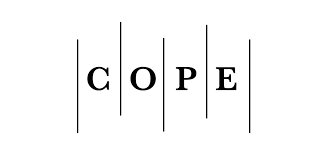Fire Detection by using DenseNet 201 algorithm and Surveillance Cameras images
DOI:
https://doi.org/10.29304/jqcsm.2024.16.11437Keywords:
deep learning, convolutional networks, , Lie detection, CCTVAbstract
Early warning of fires is very important to reduce loss of life and property. It is a technology that has become one of the most important design elements for smart cities in the future. Most current solutions rely on temperature and smoke sensors, which have limited detection ranges and scenarios and long response times. These are used inside some buildings and cannot be used in the external environment, as they are not a preferred solution. In addition to the above, sensor systems are costly because of the hardware and installation requirements, and they require regular upkeep. With the development of artificial intelligence and learning machines, fire detection has been used based on deep learning. Widely. Therefore, a solution to computer vision technology is proposed, which uses a convolutional neural network (CNN), Reducing false alarms. The use of computer vision techniques is certainly better than sensor-based systems, by utilizing security camera footage at specific periods to detect a fire when it breaks out. Our system achieved excellent results with an average predictive accuracy of 98% on the dataset. This accuracy and low cost make it a good alternative to systems that use sensors. The contribution of this study is to improve the detection process by conducting a classification process instead of detecting an object (fire), which requires complex mathematical calculations, large resources, and a long time.
Downloads
References
doi: 10.5821/ace.v4i12.2483.
H. Xu, B. Li, and F. Zhong, “Light-YOLOv5: A Lightweight Algorithm for Improved YOLOv5 in Complex Fire Scenarios,” Appl. Sci., vol. 12, no. 23, 2022, doi: 10.3390/app122312312.
J. Zhang and S. Ke, “Improved YOLOX Fire Scenario Detection Method,” Wirel. Commun. Mob. Comput., vol. 2022, 2022, doi: 10.1155/2022/9666265.
D. M. M. J. H. J. Hayawi and S. S. Muhammad, “Detection parking Spaces by using the ResNet50 Algorithm,” J. Al-Qadisiyah Comput. Sci. Math., vol. 14, no. 2, pp. 1–10, 2022, doi: 10.29304/jqcm.2022.14.2.932.
C. Yue and J. Ye, “Research on Improved YOLOv3 Fire Detection Based on Enlarged Feature Map Resolution and Cluster Analysis,” J. Phys. Conf. Ser., vol. 1757, no. 1, 2021, doi: 10.1088/1742-6596/1757/1/012094.
K. Muhammad, J. Ahmad, and S. W. Baik, “Early fire detection using convolutional neural networks during surveillance for effective disaster management,” Neurocomputing, vol. 288, pp. 30–42, 2018, doi: 10.1016/j.neucom.2017.04.083.
K. Muhammad, J. Ahmad, I. Mehmood, S. Rho, and S. W. Baik, “Convolutional Neural Networks Based Fire Detection in Surveillance Videos,” IEEE Access, vol. 6, no. c, pp. 18174–18183, 2018, doi: 10.1109/ACCESS.2018.2812835.
J. Li, S. Guo, L. Kong, S. Tan, and Y. Yuan, “An improved YOLOv3-tiny method for fire detection in the construction industry,” E3S Web Conf., vol. 253, pp. 2–5, 2021, doi: 10.1051/e3sconf/202125303069.
L. Zhao, L. Zhi, C. Zhao, and W. Zheng, “Fire-YOLO: A Small Target Object Detection Method for Fire Inspection,” Sustain., vol. 14, no. 9, pp. 1–14, 2022, doi: 10.3390/su14094930.
A. Khan, B. Hassan, S. Khan, R. Ahmed, and A. Abuassba, “DeepFire: A Novel Dataset and Deep Transfer Learning Benchmark for Forest Fire Detection,” Mob. Inf. Syst., vol. 2022, 2022, doi: 10.1155/2022/5358359.
L. Taylor and G. Nitschke, “Improving Deep Learning using Generic Data Augmentation,” 2017, [Online]. Available: http://arxiv.org/abs/1708.06020.
M. Z. Alom et al., “The history began from alexnet: A comprehensive survey on deep learning approaches,” arXiv Prepr. arXiv1803.01164, 2018.
A. Patil and M. Rane, “rn RecoConvolutional Neural Networks: An Overview and Its Applications in Pattegnition,” Smart Innov. Syst. Technol., vol. 195, pp. 21–30, 2021, doi: 10.1007/978-981-15-7078-0_3.
P. Kim, “Matlab deep learning,” With Mach. Learn. neural networks Artif. Intell., vol. 130, no. 21, 2017.
S. Tammina, “Transfer learning using VGG-16 with Deep Convolutional Neural Network for Classifying Images,” Int. J. Sci. Res. Publ., vol. 9, no. 10, p. p9420, 2019, doi: 10.29322/ijsrp.9.10.2019.p9420.
H. Gholamalinezhad and H. Khosravi, “Pooling Methods in Deep Neural Networks, a Review,” no. October, 2020, [Online]. Available: http://arxiv.org/abs/2009.07485.
Y. L. Boureau, J. Ponce, and Y. Lecun, “A theoretical analysis of feature pooling in visual recognition,” ICML 2010 - Proceedings, 27th Int. Conf. Mach. Learn., no. November, pp. 111–118, 2010.
S. Palit, “Studies on Ozone-oxidation of Dye in a Bubble Column Reactor at Different pH and Different Oxidation-reduction Potential.,” Int. J. Environ. Sci. Dev., vol. 1554, pp. 341–346, 2010, doi: 10.7763/ijesd.2010.v1.67.
M. Thoma, “Analysis and Optimization of Convolutional Neural Network Architectures,” no. August, 2017, [Online]. Available: http://arxiv.org/abs/1707.09725.
I. Sutskever, J. Martens, and G. Hinton, “Generating text with recurrent neural networks,” Proc. 28th Int. Conf. Mach. Learn. ICML 2011, pp. 1017–1024, 2011.
2 Xiang Yu1, Nianyin Zeng3,∗, Shuai Liu4,∗, Yu-Dong Zhang1, “Utilization of DenseNet201 for diagnosis of breast,” pp. 1–13.
T. Rahman et al., “Transfer learning with deep convolutional neural network (CNN) for pneumonia detection using chest X-ray,” Appl. Sci., vol. 10, no. 9, p. 3233, 2020.
G. Huang, Z. Liu, L. Van Der Maaten, and K. Q. Weinberger, “Densely connected convolutional networks,” Proc. - 30th IEEE Conf. Comput. Vis. Pattern Recognition, CVPR 2017, vol. 2017-Janua, pp. 2261–2269, 2017, doi: 10.1109/CVPR.2017.243.
P. Singh and Avinash Manure, Learn TensorFlow 2.0. 2020.
S. H. Wang and Y. D. Zhang, “DenseNet-201-Based Deep Neural Network with Composite Learning Factor and Precomputation for Multiple Sclerosis Classification,” ACM Trans. Multimed. Comput. Commun. Appl., vol. 16, no. 2s, pp. 1–18, 2020, doi: 10.1145/3341095.
J. Vojt, “Deep Neural Networks and Their Implementation,” p. 96, 2016, [Online]. Available: http://hdl.handle.net/20.500.11956/75827.
“GitHub - cair/Fire-Detection-Image-Dataset.”
“FIRE Dataset (kaggle.com),” p. https://www.kaggle.com/datasets/phylake1337/fire-d.
J. Han, J. Pei, and M. Kamber, Data mining: concepts and techniques. Elsevier, 2011.
Downloads
Published
How to Cite
Issue
Section
License
Copyright (c) 2024 Satar Shaker Muhammad, Jamal M. Alrikabi

This work is licensed under a Creative Commons Attribution-NonCommercial-NoDerivatives 4.0 International License.













